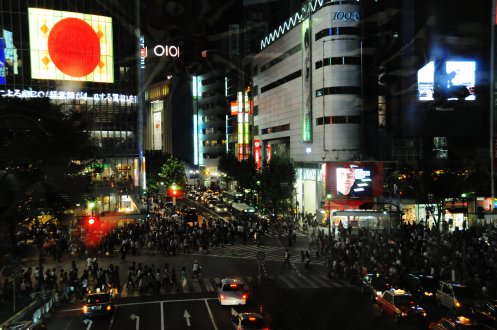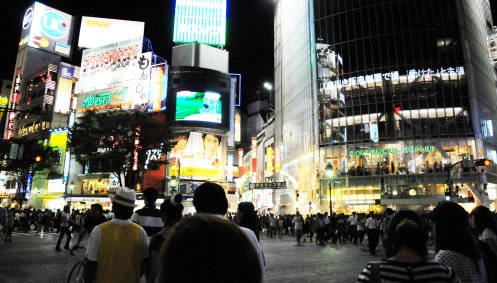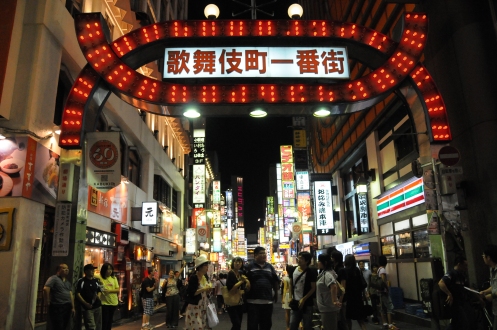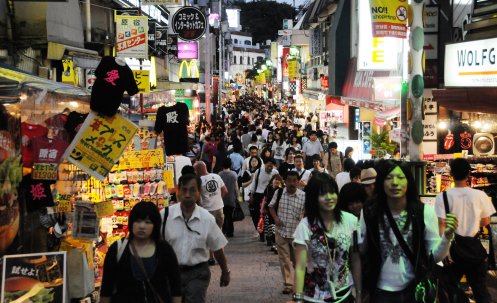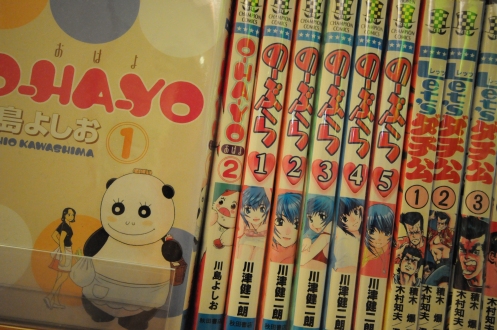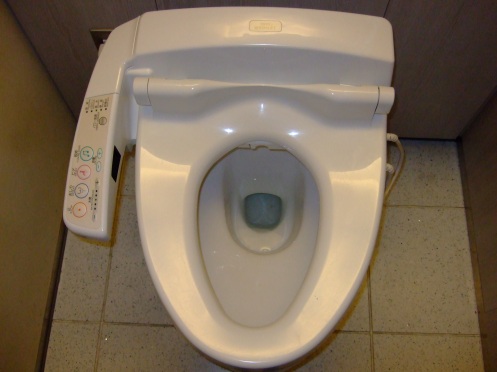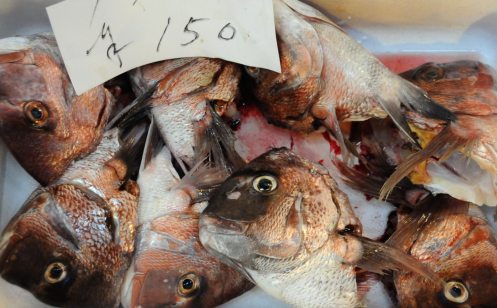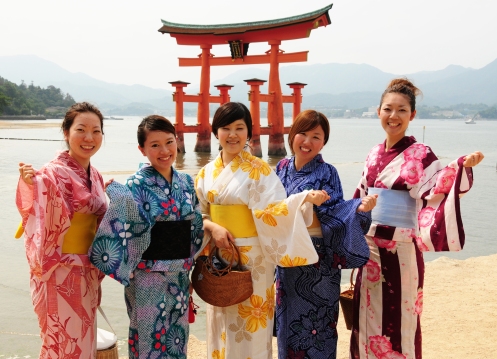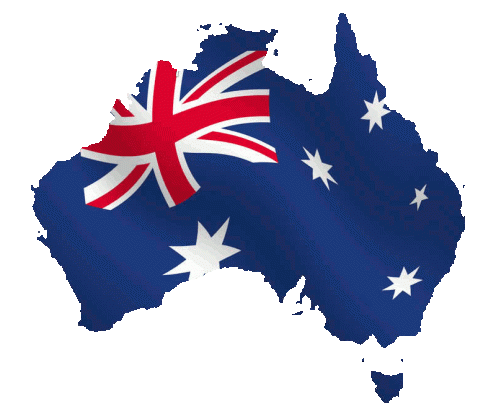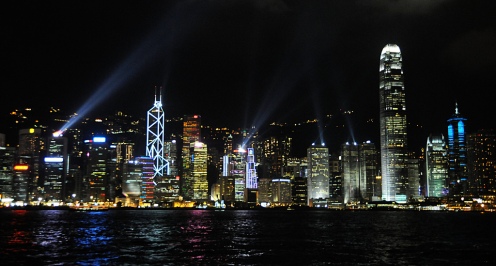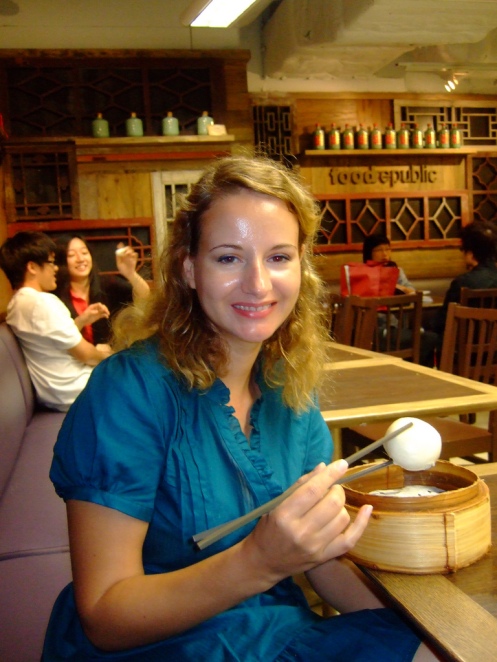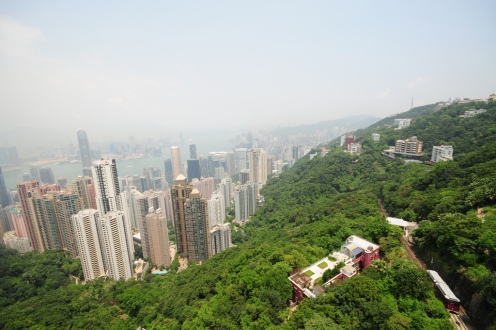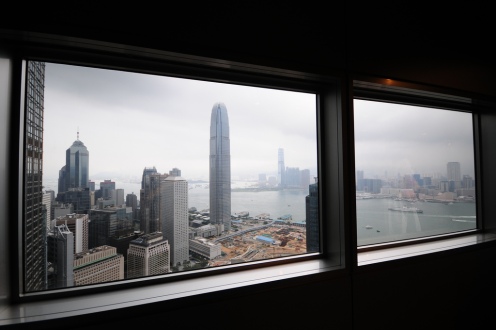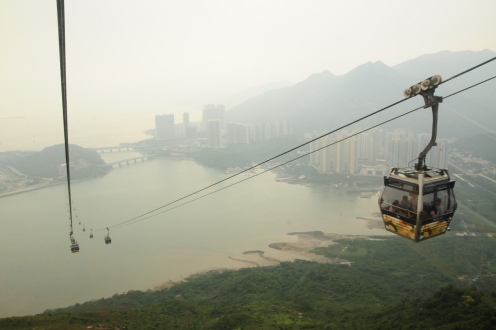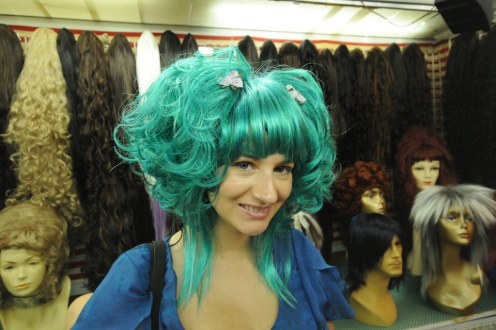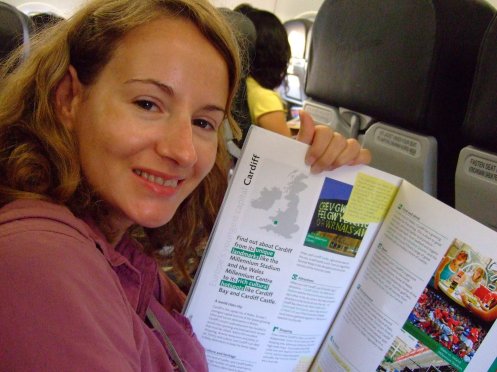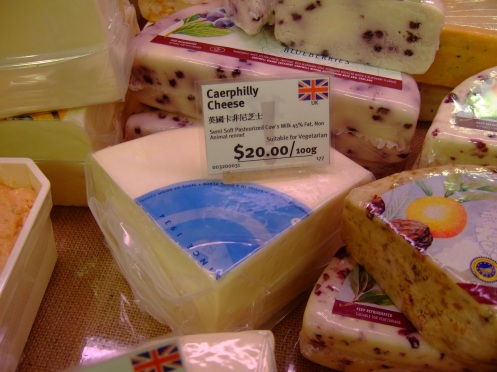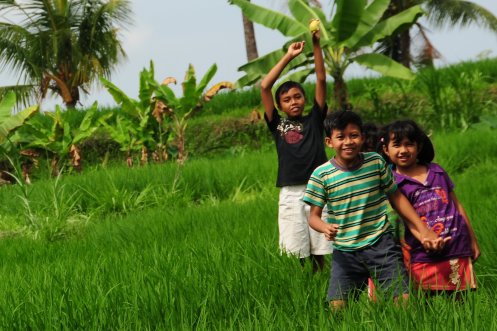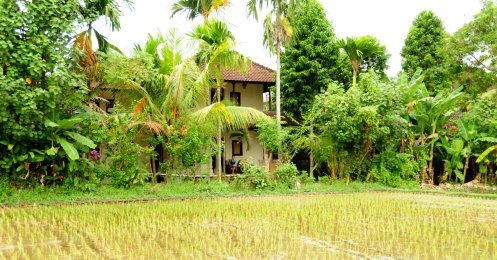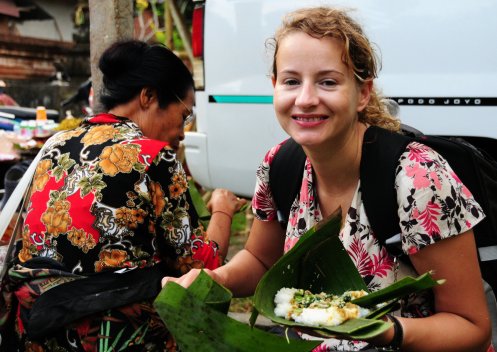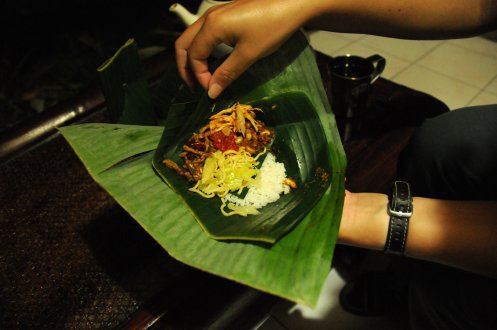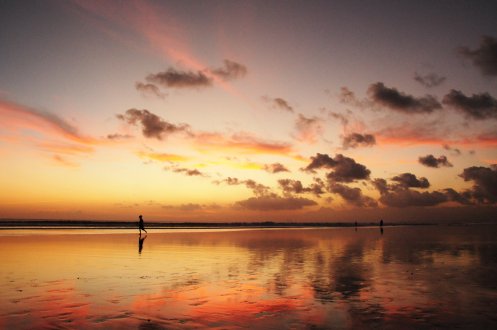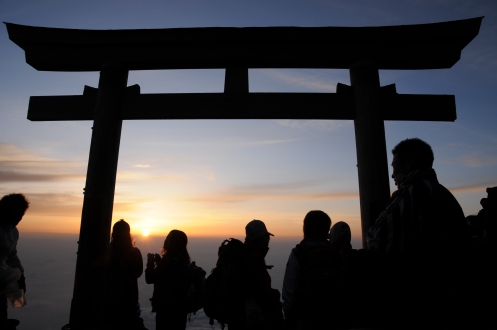
Mount Fuji is the highest mountain in Japan at 3,776 m (12,388 ft) and is an active volcano that last erupted in 1707–08. Mount Fuji’s exceptionally symmetrical cone is a well-known symbol of Japan and is open to climbers only two months of the year. Luckily we were there at the right time to climb it.
As we arrived at Kawaguchi-ko, Mount Fuji could hardly been seen as there was so much cloud, so we were suprised when the lady at the tourist information counter said that we had perfect conditions to climb. We had spent the day at the less than idyllic lake-side; with a huge highway going across it and the shores filled with high-rise hotels. We rushed back to our hotel to pack up some warm clothing, and took Andre’s socks as gloves. I took my Gregory backpack because it’s so much more comfortable, and Andre had his new camera bag. We bought 7 Snickers bars, some raisin bread and rice wrapped in nori. There are 24 hour noodle places on the top so we knew we’d be ok for food and water, it would just be the expense. We loaded all our water bottles with ice tea to give us energy and I also made sure we had our whistles and emergency survival blankets. Luckily we had brought a great Petzl head lamp in Hong Kong too.

We caught the bus from the Train Station to Station 5 on Mt Fuji. Nobody climbs from the bottom any more and the lower areas are hiking trails. The bus takes us up quite far to a station of sorts filled with shops and restaurants, horse rides and scenic walks by day. By the time we got there, there was only one gift shop and restaurant open with a toilet for 50Y. The book said that we should acclimatise before setting off, as we had risen to 2305m, so we decided to have some food and a hot drink. That was fun because the waiter had to show us how to order food. First we choose what we want from the plastic models on display, then we put money into a machine and press the right button (all in Japanese), then we gave the ticket to the waiter. Only then can he prepare the food. They don’t have to handle money I suppose. Unfortunately the meat option was horse! Lorraine and Kat would never forgive me, so I just had a drink. In fact we’re getting really sick of noodles, our rice threshold is much higher. We had a quick look around the shop selling Mt Fuji nick-nacks and bought ourselves a walking stick each for 2000Y. They had blue (mine) and red (Andre’s) ribbon on with two bells. These didn’t last long and we found many ground into the dirt along the track – I wonder if any made it to the top! Our stick was already marked with the 5th Station marker, the idea is to get them stamped at each station as you go up. But as it was 300Y per stamp and what would we do with the stick(?) we decided not to bother.

Lots of people were milling about and getting ready to climb. There was a really nice atmosphere as everyone was excited to get going. The Japanese don’t do anything by half, and most of them had bought and worn every piece of hiking paraphranalia they could get their hands on. Completely tooled up with canned oxygen, they looked like they were climbing Everest or K2! I was suprised to see many children, teenagers and older people climbing. We started to climb at 8.45pm, downhill to our dismay. This only meant that we’d have to go up a longer bit further on. We could see a good view of lights of Kawaguchi-ko and Fuji-Yoshida. After a little while we found the trail going up to the 6th Station and a trail down to the ‘real’ 5th Station. There seems to be a lot of ‘real’ and ‘half’ stations on the hiking map showing the steady influx of businesses helping climbers to spend 500Y on a bottle of water and 200Y for a toilet break – but hey, at least they warm the seats! I’m, not kidding, the toilets were lovely and warm from this Japanese obsession. They all provided sanitary napkins too oddly.

We reached Station 6 without thinking about it in half an hour. Then the proper trekking began. From 6 to 7 we had to walk up countless switchbacks with one hand on the wall and one on our walking stick. Then from 7 to 8 we were climbing over rocks as if climbing up a river bed strewn with boulders. We needed our hands free and were thankful of the head torch, though we should have had one each. We also spotted plants growing underneath the rocks for shelter. We were getting really tired and stopped at each station for a sit down. Oddly enough, a lot of the Japanese would be having a fag break next to us as we were gulping for oxygen! After Station 8 the altitude started getting to us. Andre was the first to feel giddy and sick, then he was fine and I struggled all the way to the top. It was one step, move stick, one step, move stick. Painfully slow as we were so tired and it was very hard to breath. Andre took big long breaths, but this didn’t help me so I went for the quick childbirth style breathing, which did the trick.

Towards Station 9 and the final torii gate on the top, many were content with their attempt and just sat down to rest and wait for the sunrise. We had only minutes to get through the torii gate and stone lions and it was so hard to push up when I felt so ill. We managed it though. I found a step to sit on and within 2 minutes the sun was visible on the horizon. My eyes welled up with tears so I covered my face with my buff. I couldn’t believe that we’d climbed Mount Fuji and we had found out that afternoon that we’d been accepted into Australia, and how beautiful the sunrise is and how wonderful it feels to share this moment with everyone. We all cheered as the sun made its first appearance and they all shouted the Japanese phrase “Banzai” as the sun fully rose – a word of celebration and hope for longevity.

Surprisingly a lot of people just started straight down the mountain again. We queued for a photo by the 10th post and noted the noodle shops and vending machines (yes!) doing a swift business.

There was also a shrine and a place to get your stick stamped, the place was packed! In fact we’d had to queue up most of the way there were so many people. The mountain is only open to trekkers in July and August, so everybody was making the most of the opportunity. We decided to head around to the crater. We were freezing and the wind blew straight through us, so we put Andre’s socks over our hands. As we rounded a small hill we were sheltered from the wind and began to feel the benefits of the sunlight. We stopped for a sit down and had some raisin bread for breakfast. As we’d made it all the way up, we spent a few hours wandering around the crater, taking photos and looking at the view. The highest top is actually the weather station, so we headed towards that. On the way we found the Post Office! I’d bought a nice set of postcards and brought them with me to post at the summit. I also bought a nice little certificate to commemorate our climb for 500Y, which the Post Office stamped. We spent ages writting the postcards and then sent them from the top and took a picture to prove it!

We saw some other trails leading down, but continued on to the weather station. It sits right on the crater rim. There’s nothing much in there, rocks and a bit of ice, some discolouration I think caused by algae or lichen as it was a forest green colour. The rocks were like a colour selection sack for a garden driveway, just lots and lots of small pumice stones in reds, browns and creams all piled up into huge heaps, some of which had fallen into the crater.

It was such hard work climbing up the last part as it was near vertical. There were handrails, but they had risen too high as the ground had slipped away beneath it. I lunged forward to grab the next pole to pull myself up as other people slid their way down past me. We got to the top to see 3 people in a heap with a cloth over their faces in exhaustion. We sat on the first step of the weather station and had a Snickers, crisps and ice tea, then walked up the few steps to have our photo taken with the final and highest column.

We discovered a view-point on the opposite side too. This was incredible, I’m sure we could see the Japanese Alps poking out of the carpet of cloud. We could see down the mountain into the forests of the other side. We did a little video and then headed back to the crater path to complete the circuit. We were freezing in the wind and too hot in the sun – it really is an extreme place! Thank god we had clear skies that far up. With all the cloud below we were a bit unsure what we’d find when we descended.

Just before we started off down the mountain we made a cheerful video showing our decent track snaking off in the distance below us. We thought it would never end! We had hours, HOURS, of slipping on gravel – ready to fall at any time. Andre fell 5 times, I once. The only way to get down safely and without damaging your knees was to do a side to side skiing action on the gravel – a cross between a pirate swagger and the Scousers from Harry Enfield. I could do it by putting my thigh muscles to work, but Andre couldn’t quite get the hang of it so felt better just taking it slowly with his knee joint taking the fall with each step. I could have practically ran down, in fact a lot of people did. It went on and on, switchback after switchback until we got to Station 8 then 7, where we could join up to the climbing track to get some drinks and food. The ascent seems to be over stones and and larger rocks, the decent on dusty red gravel. We could see both sides clearly at the top but the clouds soon blocked out the view. The clouds were nice and cool and we welcomed the cover from the hot sun.

The worst thing was the lack of facilities on the decent – no drinking water, shops for food and sugary drinks, or even a single vending machine! We followed the same people down the mountain all the way and had to go through little tunnels to protect us from falling rock. These were really slippery and Andre fell and I hurt my back trying to correct a wobble. By the time we had joined up with the ascending trail at station 6 we were total wrecks. We had to walk past the curious stares of all those starting out in their bright shiny outfits (a lot of them white!) while we had red dust all over our shoes and up to our knees, with a light covering of dirt everywhere else. My hair was sticking out all directions as I’d taken off my hat, and we could hardly pick our feet or eyelids up. We didn’t care though, we’d climbed Fuji San, and spent 17 1/2 hours on the mountain. Time to get back to the hostel for a shower and a good sleep.
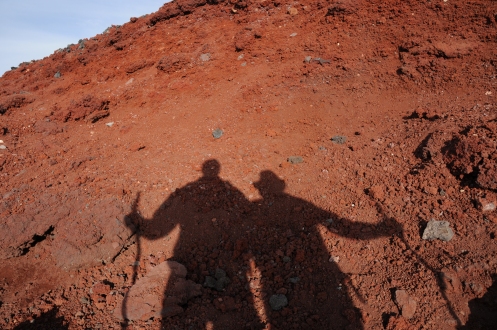
Posted in Japan































